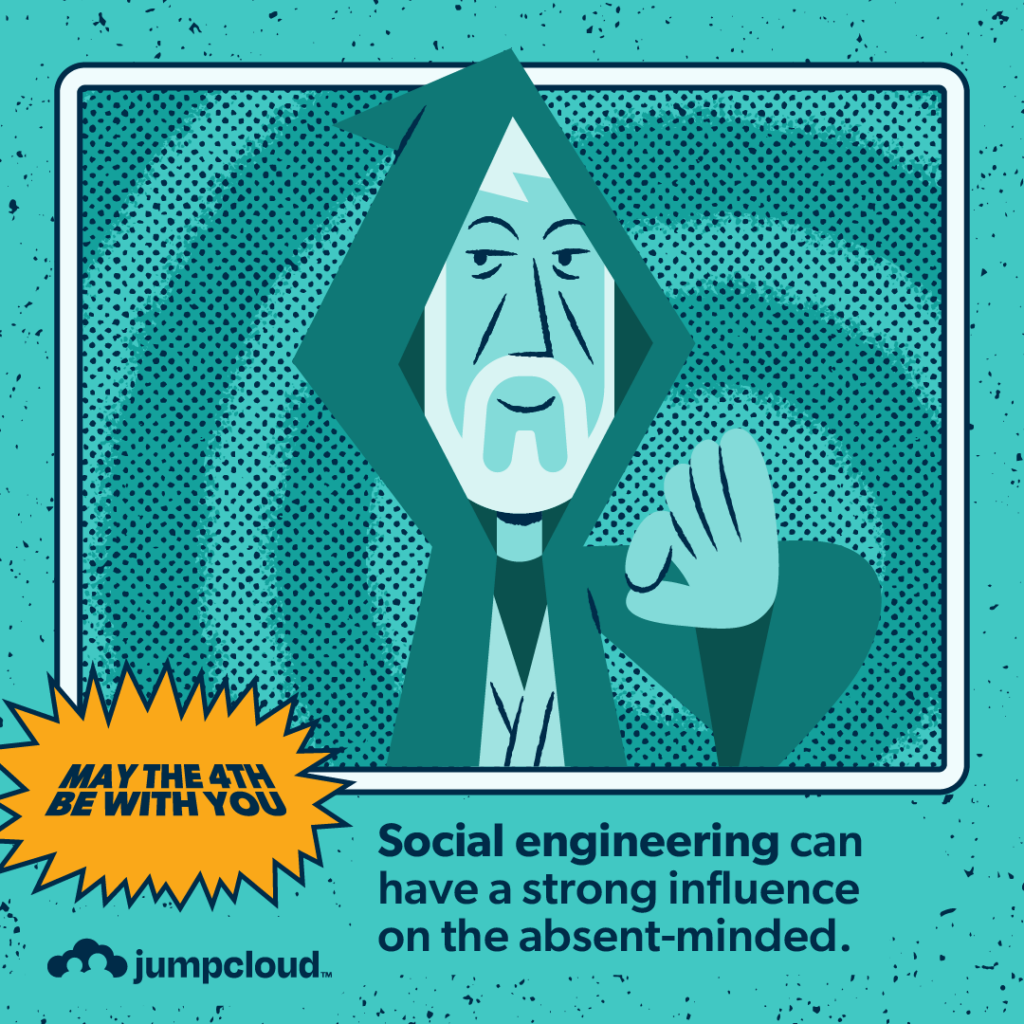A long time ago in a movie theater far, far away, a little film by the name of “Star Wars” took the world by storm and changed the course of sci-fi, cinema, and pop culture for decades to come.
But believe it or not, this intergalactic tale of droids and lightsaber duels can actually teach us a lot about the importance of cybersecurity. As it turns out, if the bad guys had been a little more security-savvy, the film might have ended quite differently.
On the occasion of “Star Wars” Day (May the 4th be with you), here are five cybersecurity lessons we can all learn from “Star Wars” (“Episode IV – A New Hope” to be precise).

1. Help me encryption, you’re my only hope
Early on in the film, Princess Leia hides some “information vital to the survival of the rebellion” and a plea for help addressed to Obi-Wan Kenobi inside R2-D2.
When R2-D2 ends up in the possession of Luke Skywalker on Tatooine, Luke accidentally stumbles across the message while cleaning the droid; however, only a small preview of it plays on a loop. R2-D2 explains that it is a private message meant for Obi-Wan and refuses to play it in full until he is delivered to him.
This is a lot like how encryption works. It renders private data meant for a specific recipient indecipherable to anyone who’s not authorized to view it, especially if they’re a random moisture farmer.
2. Social engineering can have a strong influence on the absent-minded
Luke, Obi-Wan, R2-D2, and C-3PO make their way to Mos Eisley, the wretched hive of scum and villainy where Imperial stormtroopers are on the hunt for the two fugitive droids.
They get pulled over by stormtroopers who begin asking questions and demanding to see some ID. Obi-Wan uses a Jedi mind trick to convince them that “these aren’t the droids [they’re] looking for.” The trick works, and the stormtroopers let Luke go about his business.
This is a textbook example of social engineering, an attack vector that leverages social pathways and exploits human error. Fortunately, hackers can’t use the Force, but they can leverage lies, cunning, and charm to get what they need. Almost anyone can fall victim to social engineering — especially while their guard is down. That’s why employee education and authentication safeguards are a must.
3. That’s no moon… It’s a Trojan virus
After making a deal with Han Solo and his co-pilot Chewbacca, the gang all board his ship, the Millennium Falcon, and blast off into outer space.
Eventually, they encounter the Galactic Empire’s giant space station, the Death Star, where Princess Leia is being held captive. Using its tractor beam, the Death Star draws them into it, without thinking to investigate who might be on this unknown ship first. This allows everyone to sneak deeper into the Death Star, cause a lot of chaos, and ultimately free Princess Leia.
That is essentially what happens when you download a Trojan virus. You download what you assume to be a legitimate file, but in reality, it turns out to be a virus in disguise, which you might have spotted had you stopped to take a closer look first.
4. The entire Imperial network — no password required
While onboard the Death Star, R2-D2 is able to plug directly into the Imperial network on several occasions. This allows him to do everything from finding out where the tractor beam controls are located, to deactivating the trash compactor before it crushes our heroes.
This highlights two major cybersecurity flaws. First, the Imperial network wasn’t protected with any authentication requirements. This meant that anyone could access it — and that’s exactly what R2-D2 did.
The second flaw was the lack of network segmentation, which prevents lateral movement by dividing the network into separately protected segments. Had the Galactic Empire divided the Death Star’s network into multiple independent segments, R2-D2’s access might have been more limited, preventing him from doing everything he was able to do.
5. I find your lack of faith in security threats disturbing
Remember that “information vital to the survival of the rebellion” from earlier? It turns out to be the Death Star plans, which ultimately make it to the Rebel Alliance.
After learning about this, the Galactic Empire’s General Tagge points out that with this kind of information, the rebels might find and exploit a weakness in the Death Star. But Admiral Motti is quick to shut him down and dismiss his warnings.
As you might have guessed, the plans do allow the rebels to identify the Death Star’s critical weak point, formulate an attack strategy, and ultimately destroy it.
Moral of the story: don’t be like Admiral Motti. If your CISO or IT department warns you about a potential threat or security vulnerability, it’s probably worth looking into.
Secure Your Organization with JumpCloud
Don’t end up like the Death Star. JumpCloud ensures your users can access the resources they need securely with features like passwordless authentication, JumpCloud Password Manager, multi-factor authentication, and more.
If you haven’t already, check out our most recent on-demand webinar Authentication in 2024: Using Passwords and Passwordless Methods to learn the latest developments in password management, passwordless options, and how to know when to implement what.




